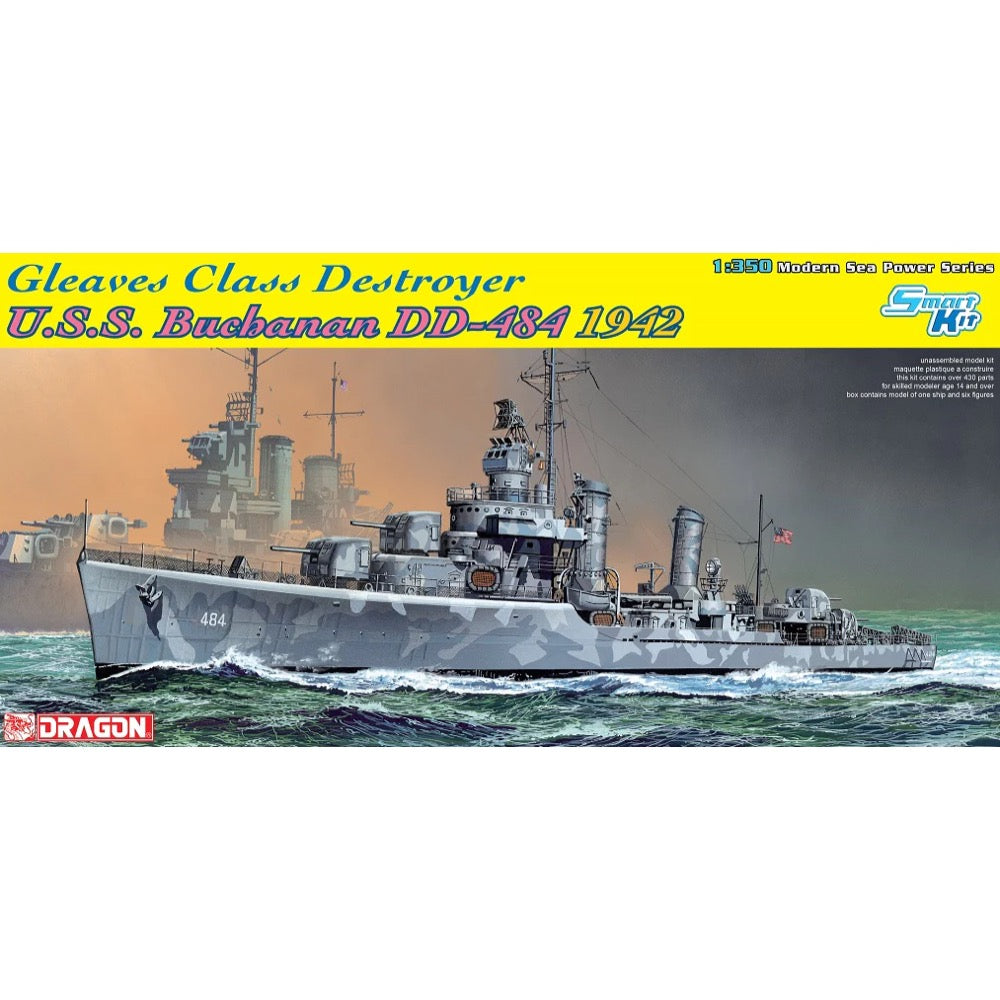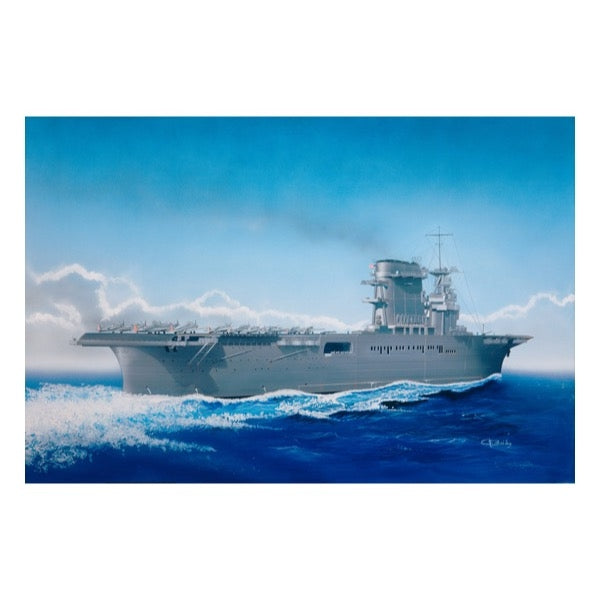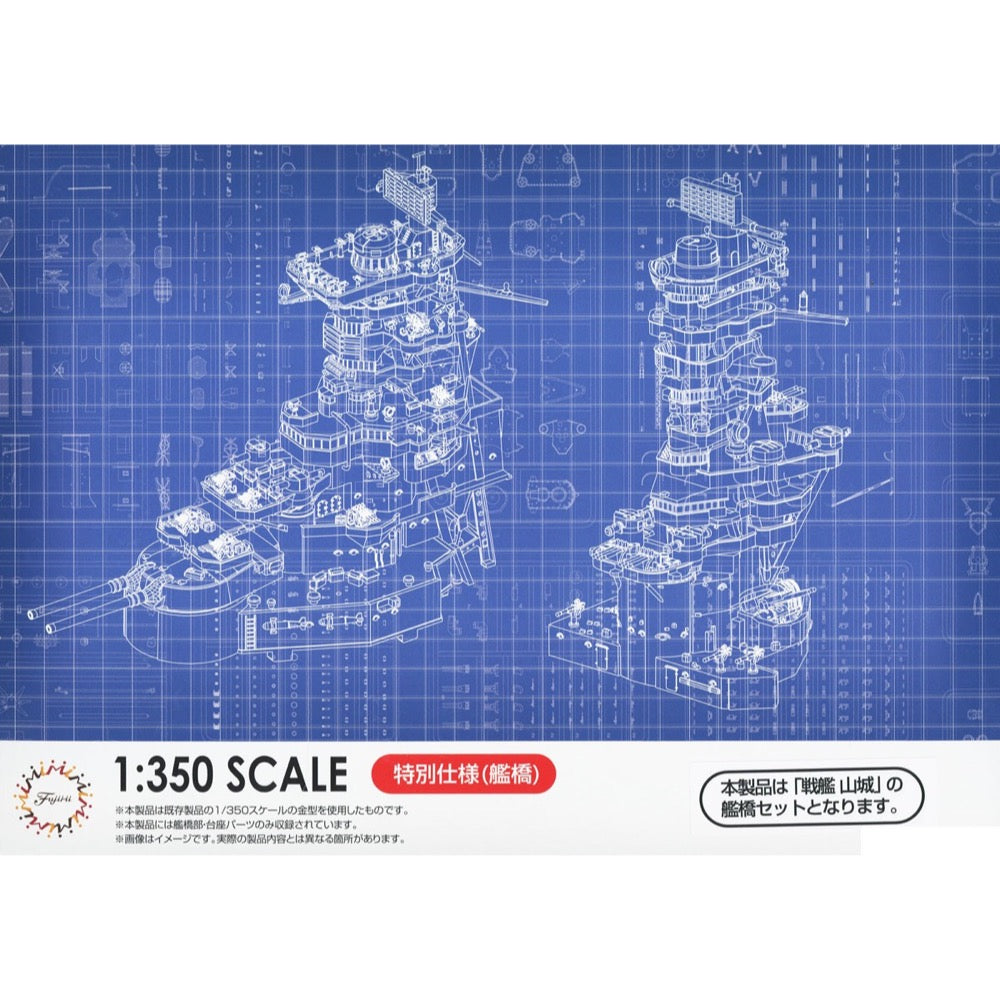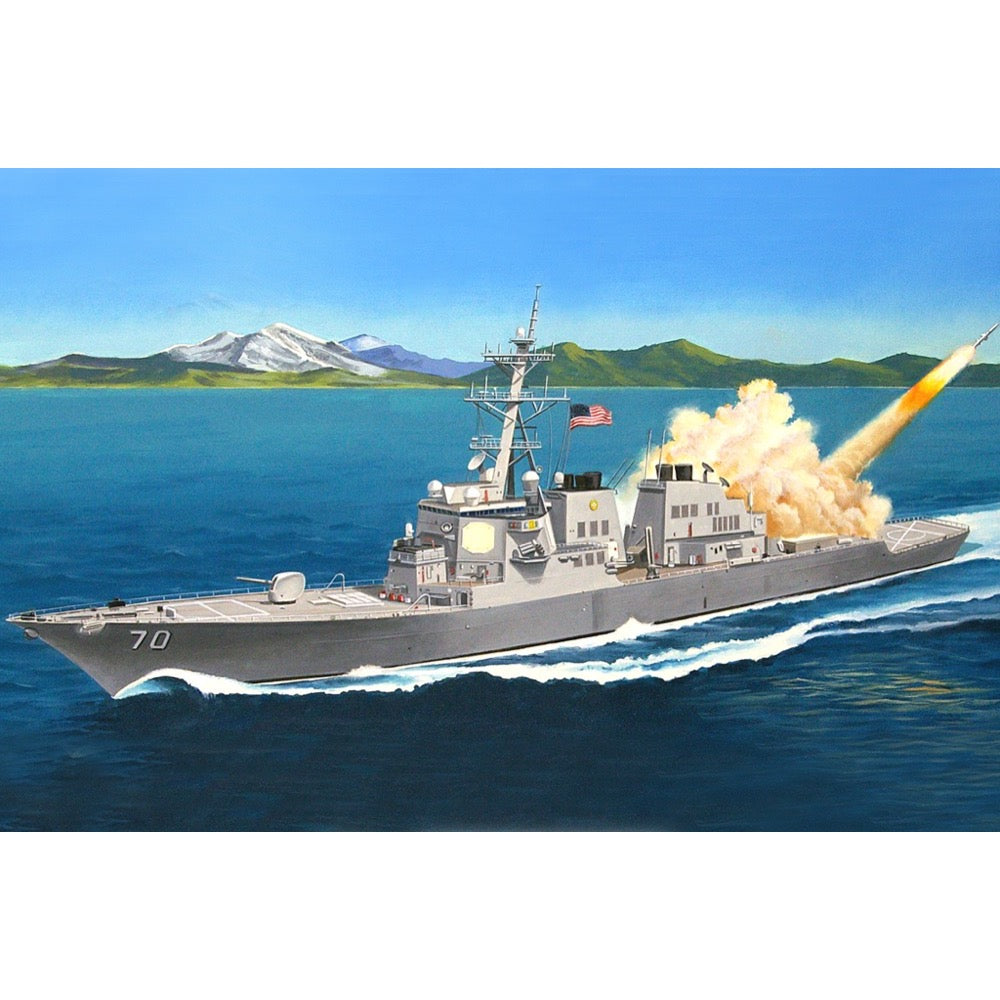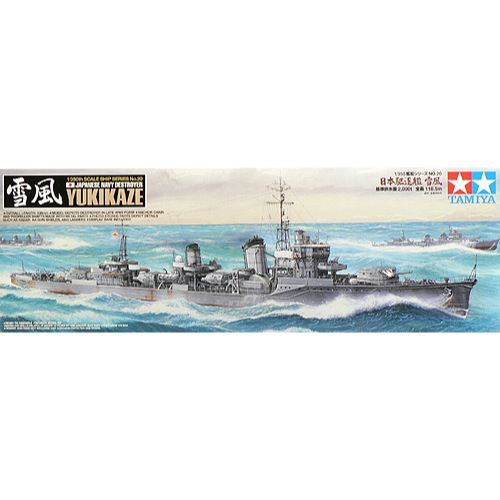
Tamiya 78020 1/350 Yukikaze Japanese Destroyer
46.00
$
<h3>A Brave Warrior</h3>
<p>After the withdrawal from the Naval treaties, plans were laid to build Kagero-class warships. The Yukikaze was the 8th completed destroyer built of the Kagero-class in January 1940. The Yukikaze saw fierce action at Midway, Guadalcanal, Mariana Islands, Leyte Gulf, as well as serving in other battles throughout the Pacific Theater. Furthermore, she also served as a patrol ship and assisted in transportation duties. At the time of her completion, she initially came armed with three dual 12.7cm gun turrets and two quadruple 61cm torpedo launchers, but in the latter stages of the War, her armament was strengthened with a complement of AA guns as well as radar changing her beautiful silhouette into one of ferociousness. Even at the Ten-Ichi-Go operation in April 1945 where she fought hard alongside with the doomed Yamato, she was able to save many survivors and return safely to port. The Yukikaze survived WWII relatively undamaged she was therefore named "the Lucky Destroyer". After the war, she was used to ferry Japanese soldiers and personnel back to Japan. Later, she was transferred to the Republic of China for war reparation and served with distinction throughout the 1960s.</p>
<h3>Features</h3>
<ul>
<li>
<p>Length: 338mm, Width: 31mm. The added AA guns and radar give the Yukikaze a fierce presence.</p>
</li>
<li>
<p>The ship's hull is separated into left and right parts. The ship's riveted side plates and degaussing cables have been reproduced with great detail.</p>
</li>
<li>
<p>Metal parts depicting the anchor chain and propellers add realism to the model.</p>
</li>
<li>
<p>Machine gun parts feature a laser processing for a sharper, more realistic finish.</p>
</li>
<li>
<p>Polycaps allow the main turrets and torpedo tubes to freely rotate.</p>
</li>
<li>
<p>A display stand is included allowing you to show your wonderful full hull exhibit.</p>
</li>
<li>
<p>After completion, you are able to store your model in its special packaging.</p>
</li>
</ul>
<p> </p>
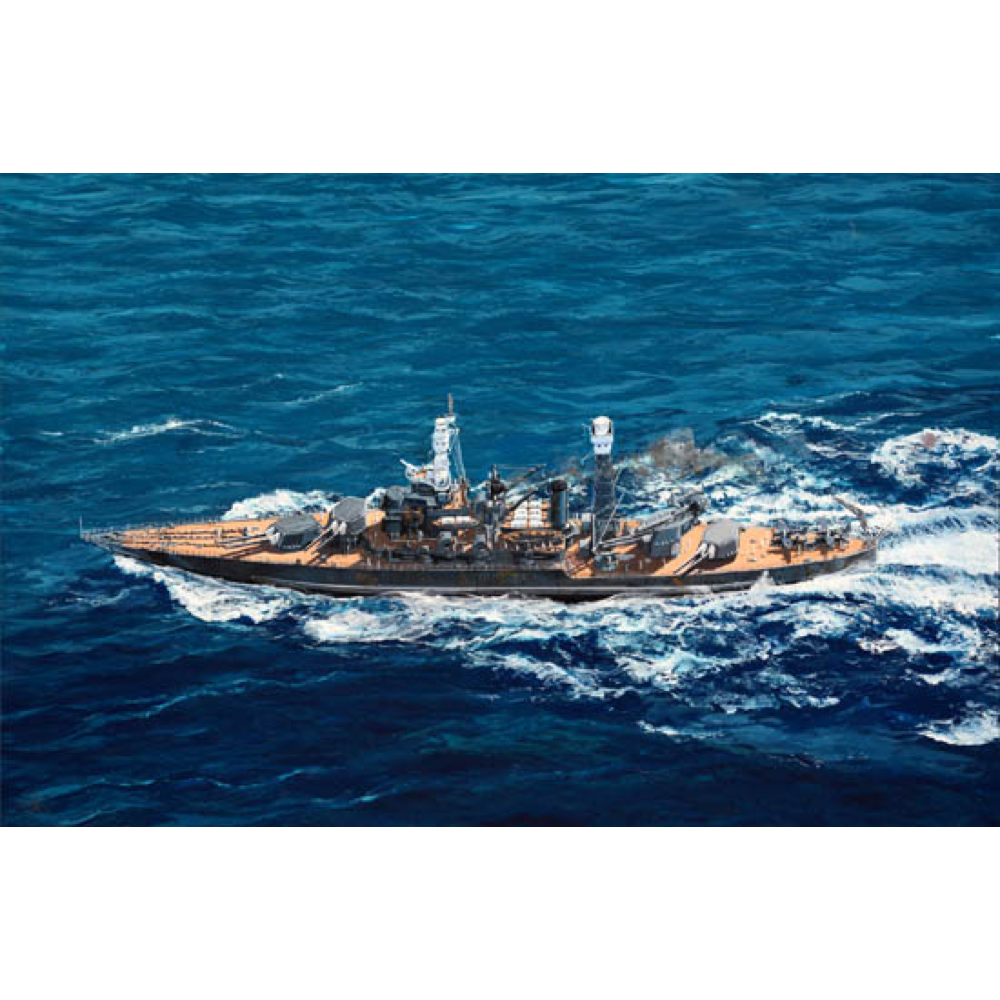
Trumpeter 05771 1/700 USS West Virginia BB-48 1941
27.00
$
<p>The 2S1 Gvozdika is a Soviet 122-mm self-propelled howitzer that resembles the PT-76 but is essentially a version of the MT-LB APC, mounting the 2A18 howitzer. 2S1" is its GRAU designation.In the Russian Army it is commonly known as Gvozdika. The 2S1 is fully amphibious with very little preparation, and once afloat is propelled by its tracks. A variety of wider tracks are also available to allow the 2S1 to operate in snow or swamp conditions. It is NBC protected and has infra-red night-vision capability.</p>
<h3>Features</h3>
<ul>
<li>The kit consists of over 960 parts</li>
<li>The kit w/refined detail</li>
<li>Multi-slide moulded turret and lower hull</li>
<li>Photo etched parts included"</li>
</ul>
<h3>Specification </h3>
<ul>
<li>Scale : 1:700</li>
<li>Item Type : Static Warship</li>
<li>Model Brief : Length:272.2 mm : Beam:43.4 mm</li>
<li>Total Parts : 440+</li>
<li>Photo Etched Parts : 1 piece</li>
<li>Total Sprues : 17 sprues, upper hull, lower hull, waterline plate, deck and stand</li>
</ul>

Revell 05179 1/144 German Destroyer Class 119 Z1/Z5
141.00
$
<p>Model kit of the class 119, the first destroyer of the German Navy after the Second World War. Adopted from US Navy stocks.</p>
<h3>Features</h3>
<ul>
<li>Includes photoetched parts</li>
<li>Includes metal tubes for the guns</li>
<li>Two-piece hull</li>
<li>Rotating propellers and movable rudders</li>
<li>Detailed main deck</li>
<li>Four detailed gun turrets with movable tubes</li>
<li>Detailed torpedo tubes</li>
<li>Depth charges</li>
<li>Two Hedgehog mortars</li>
<li>Full-scale authentic mast with delicate radar system</li>
<li>Display stand</li>
</ul>
<p><strong>Authentic representation of the following versions</strong></p>
<ul>
<li>German Destroyer Class 119, Destroyer 5, D179, 3rd Destroyer Squadron, Flensburg, 1964</li>
<li>German Destroyer Class 119, Zerstörer 1, D170, 1st Destroyer Squadron, Kiel, 1965</li>
</ul>

Aoshima A005133 1/700 Light Cruiser Ooi
20.00
$
<p>Construction was completed on the Oi in 1921 in Kobe's Kawasaki shipyard. She was assigned to the 2nd Fleet's 4th Squadron and was used as a practice ship for the naval academy. She participated in the Battle of Midway, and afterwards was converted into a high-speed transport with the removal of the torpedo instrumentation. On Sept. 19, 1944, she wa sighted sunk in the South China Sea by an American submarine, the USS Flasher.</p>
<p>Molded in gray plastic, and includes decals. </p>
<p>This is an injection-plastic ship model kit.</p>
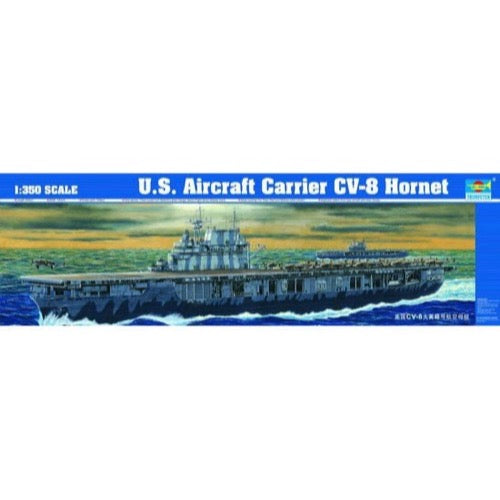
Trumpeter 05601 1/350 U.S. CV-8 Hornet
67.00
$
<h3>The USS Hornet (CB-8), the 1941-1942 version USS Hornet, was a 19,800 ton Yorktown class aircraft carrier constructed at Newport News, Virginia.</h3>
<p>Commissioned in October 1941, she spent the next four months in the Atlantic preparing for battle. Transferred to the Pacific in March 1942, the Hornet was immediately deployed for the Doolittle raid. On 18 April 1942 she launched 16 U.S. Army B-25 bombers to attack Japan, a strike that caused relatively little damage but which had enormous strategic implications. The Hornet was then sent to the South Pacific to reinforce U.S. units following the Battle of Coral Sea, but was recalled to Pearl Harbor in mid-May. She then took part in the Battle of Midway, on 4-6 June 1942 during which her aircraft assisted in the sinking of the Japanese cruiser Mikuma.</p>
<p>In August 1942, the Hornet returned to the South Pacific to join the fight for Guadalcanal. During much of September and October, she was the only operational U.S. aircraft carrier available to oppose the Japanese in that area. On 26 October 1942, during the Battle of the Santa Cruz Islands, her planes attacked and badly damaged the Japanese carrier Shokaku. In return, however, the Hornet received heavy bomb and torpedo damage, necessitating her abandonment. Though accompanying U.S. destroyers attempted to scuttle her, she remained afloat until torpedoed and sunk by Japanese ships early in the morning of 27 October.</p>
<h3>Specifications</h3>
<ul>
<li>
<p>Model Brief: Length: 720 mm Width: 100mm</p>
</li>
<li>
<p>Total Parts: 433pcs</p>
</li>
<li>
<p>Photo Etched Parts: 2PCS</p>
</li>
<li>
<p>Total Sprues: 16pcs + Upper hull + Lower hull + Waterline plate +Hangar decks + Flight decks + Display stand</p>
</li>
<li>
<p>Paint Schemes: For Tokyo Raid and Midway battle version</p>
</li>
</ul>
<p> </p>
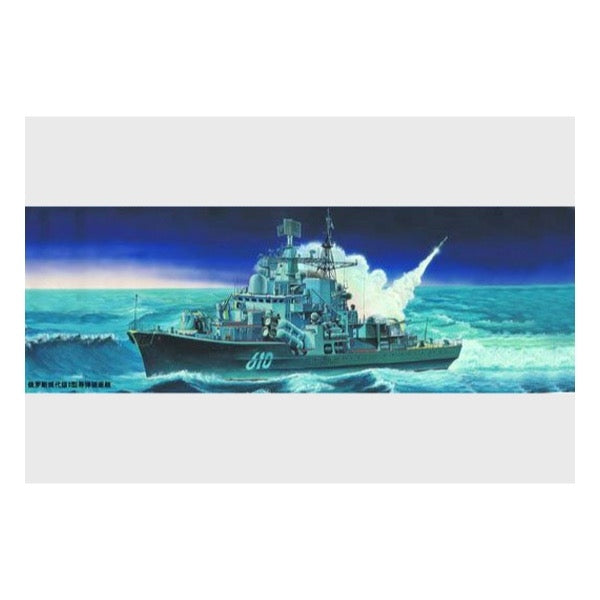
Trumpeter 04515 1/350 USSR Sovremenny Des. 956E
22.00
$
<p>Called modern missile destroyer type 956 belong to the Russian navy destroyer of the third generation, the ship by the former Soviet union in 1970 the north's design, completion of construction design delivery Leningrad, 1976 Dan's shipyard, shipyard built north of st Petersburg. The first system ship "modern" was built in 1980. The ship has built the 18th, there are many vessels under construction. In Russia's fleet of modern missile destroyer has repeatedly visited the United States, Germany and China, etc. In 1986 from the level of modern missile displacement ship to ship up to 6 Ⅱ type of ship, the difference between it and the type I ship mainly has the following points. Before the mast head is installed on the two back-to-back phased array radar; Russian name for MP - 710, NATO is referred to as the "roof" or "particular" radar. Mizen mast girder is higher and equipped with the electronic countermeasures equipment. Bridge front window 5 fan, two bevel on both sides and 2 around each fan. Deck of wave plate and before the main gun of the rotating plate is also changed. Install - 10 short-range bait device, about the arrangement for the bridge every four to six, two aft deck, the electronic countermeasures equipment also increased. </p>
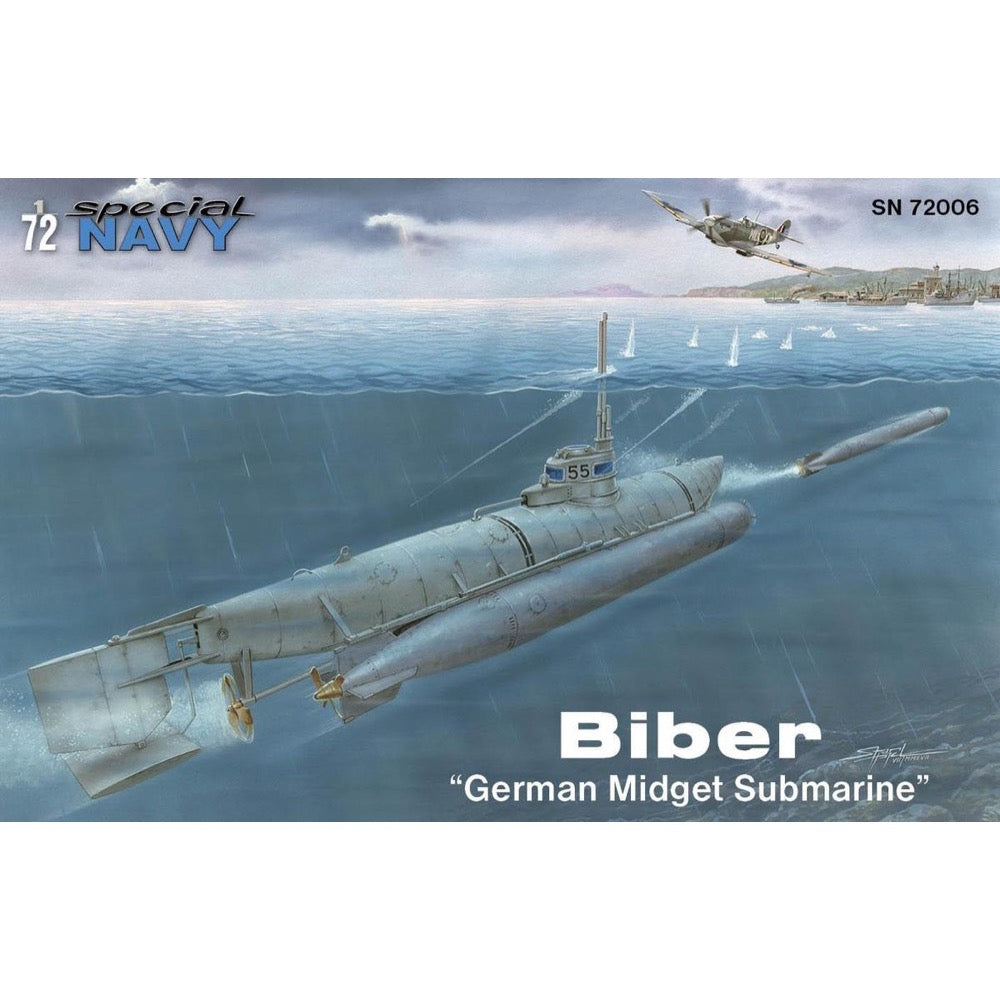
Special Hobby SH72006 1/72 Biber German Midget Submarine
13.00
$
<p><strong>Biber "German Midget Submarine" 1/72</strong></p>
<p>The Biber was one of the weapon systems developed during the Second World War at the time when the situation on both fronts was gradually becoming worse and worse for Germany. In 1943 it became clear that the Allied invasion would take place soon somewhere on the Atlantic coast of the continent and the German military began to seek and develop new and rather unorthodox weapons to avert the invasion. Along the Neger, Marder and Hai manned torpedoes, also the Biber and Molch midget submarines were to stop the invasion fleet.</p>
<p>The original idea of the Biber sub came from Korvettenkapitän Robert Bartels and first prototypes were built and the production took place at Flanderwerke in Lübeck, the development being led by Hermann Bunte. Allegedly, Bartels was influenced by captured British Welman W46 midget sub. The Biber’s displacement was 6.6 tonnes, on the surface it was powered by a 32 HP Otto Blitz petrol engine and while submerged, the propulsion was provided by a Siemens SSW GL231 electric motor. The Biber could submerge down to 20m, in emergency to 30m. It could carry either two G7e torpedoes or mines. The hull was so diminutive that its operator (only a crew of one was possible) did not have much space in the conning tower.</p>
<p>The Biber prototype, known also as Adam, was put to tests on 29 March 1944, though the tests were not quite successful and several improvements had to be implemented before German admiral Karl Dönitz approved building of further four prototype Bibers and later also the large scale production, which gave a total of 324 Bibers from Flanderwerke, Ansaldo and Klökner-Humbolt-Deutz plants.</p>
<p>Bibers were put into so-called K-flottillen numbered 1 to 9, which saw action in the English Channel during the Allied invasion, in the North Sea off Norway, in the Scheldt estuary and also in the river Waal during the attack on the Nijmegen bridge. Bibers did not enjoy much success in the torpedo-carrying role, mine-laying missions suited them better. Some trouble also occured due to the exhaust fumes getting into the operator’s station and many Bibers were lost just to this reason. The conning tower lacked in height causing the submarine pilot, who was equipped only with wrist compass, difficulties in finding his way to the target. Moreover, the Biber although being rather manoeuvrable and stable on the surface, was clumsy while under the water. Several Biber submarines were captured during the war, but the Allies did not seem to find interest in them and tested them only very briefly. Some of the surviving machines have been put to display in museums.</p>
<p>The kit is 3D designed and injection moulded using metal moulding blocks. The kit’s components come on two grey styrene sprues and one with clear parts. The A sprue offers the fuselage halves, B sprue has the torpedoes. The decal sheet brings markings for four overall grey Bibers and one bearing a camouflage scheme consisting of four colours. The latter and also one grey Biber were also decorated with a shark mouth. The rest of the machines in the kit have only numbers on the tower.</p>
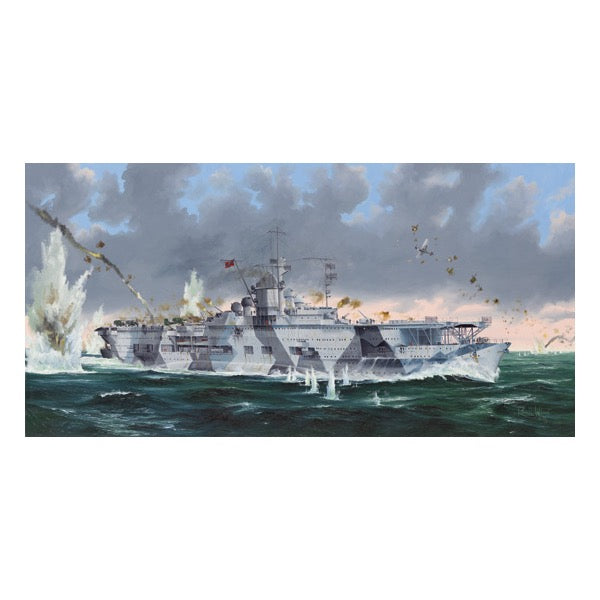
Trumpeter 05627 1/350 German Navy Aircraft Carrier DKM Graf Zeppelin
83.00
$
<p>The Zeppelin-class aircraft carrier Graf Zeppelin is an aircraft carrier built by the German Navy (Kriegsmarine) during World War II. It is also the only aircraft carrier in history that Germany has launched, with a displacement of about 33,000 tons. The keel was laid at the Deutsche Werke in Kiel on December 28, 1936. Due to the dispute over the ownership of the aircraft between the German Navy and the Air Force, the construction plan was continuously delayed, and the subsequent outbreak of World War II caused the aircraft carrier to be terminated in May 1940 and 85% of the project was completed. Part of the funds was used to develop submarines, and the aircraft carrier of this class was ultimately not completed.</p>
<p>On April 25, 1945, in order to avoid falling into the hands of the Soviet army, he sank. After the war, the Soviet Union picked up the hull of the "Graf Zeppelin" and sank it while being towed to the Soviet Union. In August 1947, the Soviet Union picked it up again and towed it to Leningrad again. After detailed research, it was blown up by the Soviet Navy as a target ship.</p>
<h3>Features</h3>
<ul>
<li>Hull split into two parts</li>
<li>Detailed flight deck and hangar deck</li>
<li>Extensive photo-etched details included</li>
<li>Aircraft Wing includes: AR-195, Bf-109, Ju-87, Fi-167</li>
<li>Complete ship and aircraft decal sets</li>
</ul>


